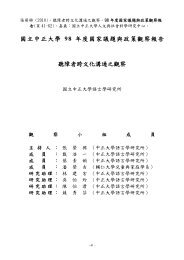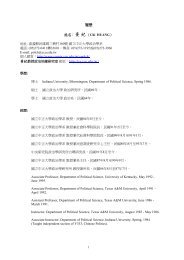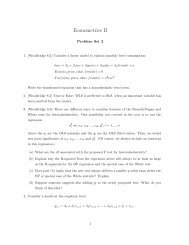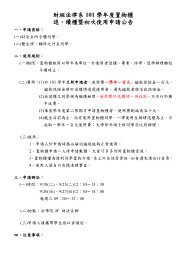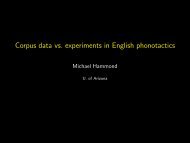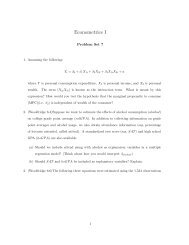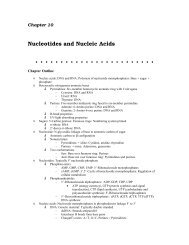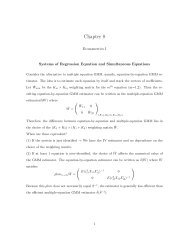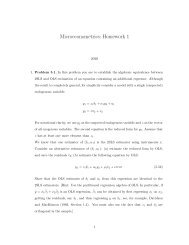Slides
Slides
Slides
You also want an ePaper? Increase the reach of your titles
YUMPU automatically turns print PDFs into web optimized ePapers that Google loves.
In theory, language could vary without limit in the way word classes are formed and<br />
in the features utilized to encode the category. A language may have major categories<br />
with a large membership, such as nouns and verbs, as well as idiosyncratic minor<br />
categories or sub-categories consisting of very few members. The set of syntactic<br />
categories in human language is potentially unbounded.<br />
Empiricist views on the acquisition of syntactic categories have had a long history,<br />
going back to the early pivot grammar of Braine (1963), the limited scope forumulas<br />
of Braine (1976), the semantic-based proposals of Bowerman (1973) and Schlesinger<br />
(1982), the semantic-distributional analysis of Maratsos and Chalkley (1980),<br />
Maratsos (1982), the inductive learning account of MacWhinney (1982) that takes<br />
into account the function of rote-learning, analogy and item-based patterns; and the<br />
more recent usage-based proposal of Tomasello (1992, 2000, 2003) which argue for<br />
the predominance of lexically based patterns rather than abstract categories in early<br />
development.<br />
Very Early Parameter Setting (VEPS): "From the earliest observable ages (around<br />
18 months), children have set their parameters correctly." (Wexler 1998, 2003)<br />
'Do young children have adult syntactic competence" (Tomasello 2000):<br />
"...the 2-year-old child's syntactic competence is comprised totally of verb-specific<br />
constructions with open nominal slots. Other than the categorization of nominals,<br />
nascent language learners possess no other linguistic abstractions or forms of<br />
syntactic organization." (Tomasello 2000:214)<br />
1.3. Arguments in favor of the Universal Category Hypothesis<br />
• Inherent circularity in the definition of syntactic categories (cf. Pinker 1987).<br />
Criteria for the English determiner (Valian 1986):<br />
a) Must appear, if present in NP, pre-Adj or pre-Noun or pre-both.<br />
b) Must not stand alone as sole content of an utterance or phrase.<br />
c) Must not be sequenced (exceptions: certain quantifiers).<br />
Criteria for the Cantonese classifier (Wong 1998:58)<br />
a) A classifier can occur immediately after a determiner, a numeral, or a VP.<br />
b) A classifier usually occurs immediately before a noun or an adjective modifying the<br />
head noun.<br />
c) A classifier can occur immediately before an adjectival phrase or relative clause.<br />
• A purely item-based distributional account will involve astronomical computations<br />
Caveat: The learner may not consider all combinations of words out of other<br />
constraints such as processing limitations; the idea of 'less is more' of Elissa Newport<br />
2




